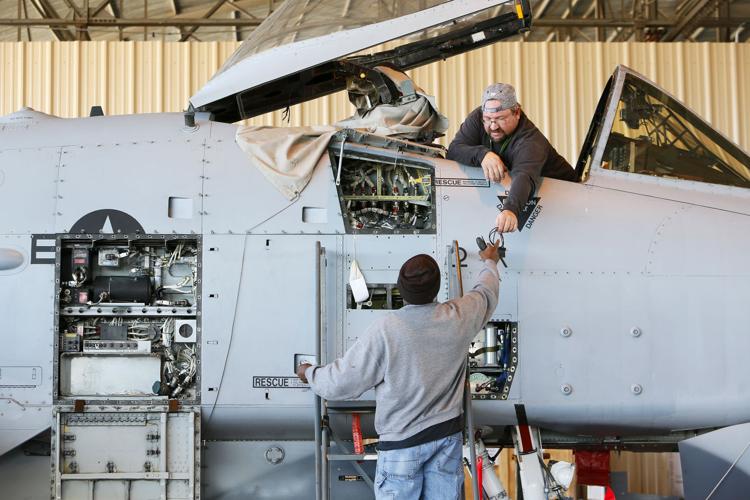A group supporting Davis-Monthan Air Force Base has hired a consulting firm headed by a retired Air Force general to help protect the base from future closure.
The move came as D-M reported Friday that the base pumped an estimated $991 million into the Tucson-area economy in fiscal 2015, up about 2 percent from the previous year.
The DM Joint Steering Committee has hired Tucson-based S’relli Consulting to develop a strategy to advocate for the base, said Brian Harpel, president of the DM50.
S’relli is led by retired Air Force Lt. Gen. Gene Santarelli, who is partnering on the project with Fred Pease, a former deputy assistant secretary of the Air Force for installations and environmental policy.
Santarelli’s more than 30-year career in the Air Force included a stint as D-M’s commander, and he has worked as a consultant with local officials during previous base-closing rounds.
The DM Joint Steering Committee includes the DM50, the Southern Arizona Defense Alliance, the city of Tucson, Pima County and others. The DM50, Tucson and Pima County each has pledged $180,000 for the three-year advocacy effort.
Harpel said the initial consulting contract is for less than three years but is renewable. He declined to disclose the value of the contract.
“We need a long-term, sustainable campaign, and I think the first step is developing a strategy with experts, and that’s what these guys bring to the table,” said Harpel, a commercial real-estate broker.
In its annual economic-impact report, D-M said that with the effect of local military retirees, the base’s overall impact was more than $1.5 billion in fiscal 2015.
D-M reported that direct effects included payroll of more than $597 million and $199 million in local spending on goods and services.
The base also created an estimated 4,600 indirect jobs valued at about $196 million, D-M said.
Of the 6,800 active duty military service members assigned to D-M last year, 74 percent lived off-base.
Local military retirees — who often stay in Tucson or move here to take advantage of base amenities — are counted because they receive their retirement pay and benefits here.
D-M counted nearly 19,500 local military retirees, including more than 9,400 retired Air Force personnel, with a payroll of about $522 million.
Military supporters, including the business-backed DM50, cite the base’s importance to the local economy as they advocate for new missions for D-M, which opened for military operations as a bomber training base in 1940.
The Air Force had been trying to retire the A-10 Thunderbolt II close air-support jet — D-M’s biggest flying mission — by 2019 to save money.
Those efforts were largely stymied by Congress, though nine A-10s at D-M were put in backup status last year. Earlier this year, the Air Force said it would put off the A-10 fleet’s retirement date to 2022, with some cuts starting in 2018.
Local supporters and members of the state’s congressional delegation worry that loss of the A-10 mission would make D-M vulnerable to future closure.
Supporters — including Sen. John McCain, R-Phoenix, and Rep. Martha McSally, R-Tucson — have been advocating for new missions to keep the base viable into the future.
Earlier this month, the Air Force named D-M among four bases that could be a future base for the next-generation F-35 Lightning II stealth fighter.
But members of Tucson Forward, a group that opposes bringing the F-35 here for noise and safety reasons, has said the base’s economic impact is overstated and that basing the jets at D-M would hurt local tourism and quality of life.
D-M also has been named among several bases under consideration for additional reconnaissance drone units.





